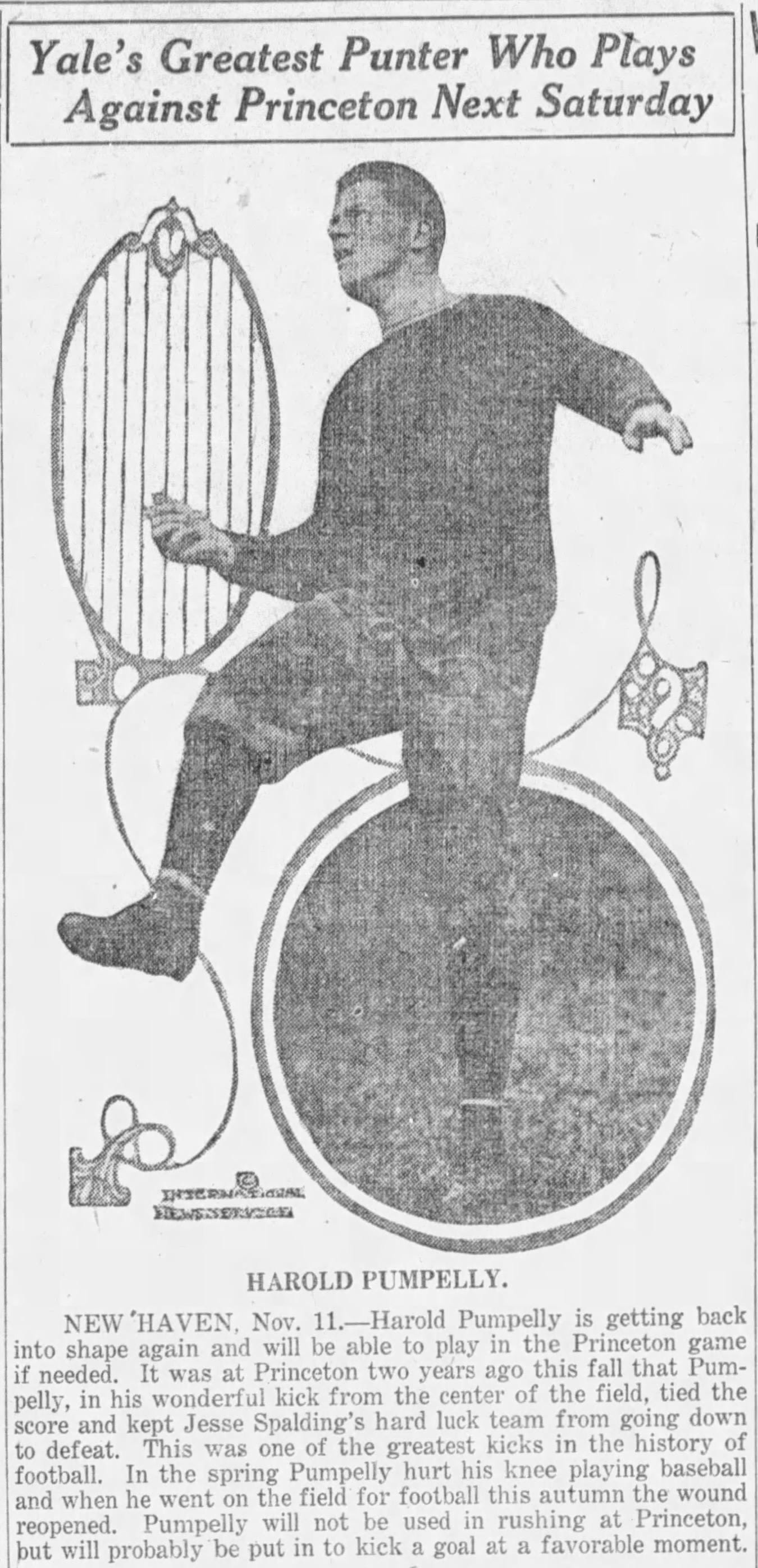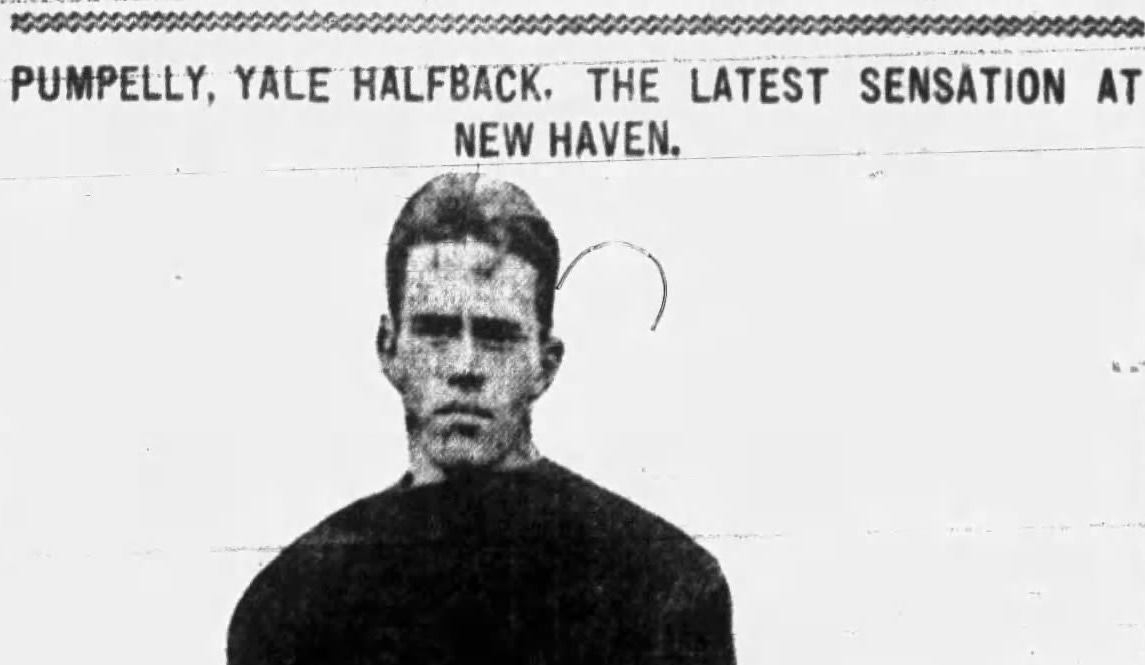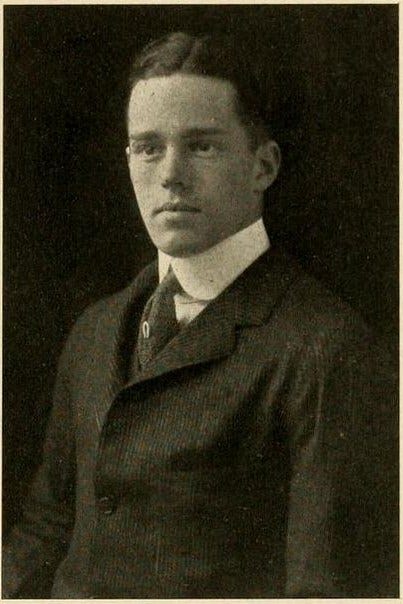Today's Tidbit...Pumpelly For The Tie
Football has seen its share of memorable field goal attempts for the win at or near the end of games, but fewer field goal attempts seeking to tie the game have proved memorable, especially now that football has overtime. Though long forgotten today, one shot at a tie that proved memorable for those who saw it came during the 1912 Yale-Princeton game.
Played at Princeton's Osborne Field two seasons before Palmer Stadium opened, the Tigers entered the game with a 7-1 record, having lost 16-6 to Harvard two weeks earlier. Yale was 7-0 and closed the season by hosting Harvard the following week.
The 1912 season ushered in numerous rule changes. The field lost its 55-yard line but gained end zones. Offenses had four downs rather than three to gain ten yards, and touchdowns earned six points rather than five. Since field goals remained worth three points, they were less valuable relative to touchdowns, but that was not a factor in this game.
Played in ideal football conditions, first-quarter play went back and forth, with Princeton's Hobey Baker missing a field goal attempt while Yale fullback Maurice “Lefty” Flynn made his placekicked field goal attempt to give Yale a 3-0 lead.
Early in the second quarter, Baker tied it up by dropkicking from the 33-yard line and gave Princeton a 6-3 lead with a 15-yarder a few minutes later. As the half neared its end, Yale moved the ball downfield, aided by a Princeton penalty. The clock, visible only to the official holding the stopwatch on the field, continued running as Yale substituted sophomore Harold Pumpelly into the game. Pumpelly, who possessed the strongest leg on the Yale team, missed the 25-yard drop kick as time ran out on the half.
The back-and-forth play continued in the scoreless third quarter. As the fourth quarter began, Princeton subbed Pumpelly back into the game, though his only carry came on a failed punt fake. Down by three, Pumpelly positioned himself for the deep snap with a minute or two left as Yale faced fourth down outside Princeton's 40-yard line. Having missed a 25-yard field goal at the end of the first half, most of the stadium thought Pumpelly would punt the ball, hoping for a Princeton fumble on the return or their first few plays from scrimmage. Instead, Pumpelly caught the snap and dropkicked the ball from the 50-yard line, an extreme distance for a dropkick. A beautiful high boot flew toward the goal posts as a Princeton player waited underneath, prepared to field the ball should it fall short, but it did not. After fifty yards of flight, the ball hit the crossbar, bounded into the air, continued its forward path, and landed in the end zone, giving Yale a field goal and a tie game. A second-stringer, who missed a 25-yard field goal at the end of the first half, had just dropkicked the ball from double the distance to save the day.

The play made Pumpelly a national celebrity for a few days and raised expectations for the next two seasons. Unfortunately for Pumpelly, his good fortune had run out with the game-tying dropkick. A knee injury suffered on the baseball diamond the following spring kept him from playing in all but a few minor games as a junior. He practiced kicking at times as a senior, and his hoped-for appearance against Princeton in 1914 was touted beforehand, but he never entered a game as a senior. Perhaps Pumpbelly could have made a go of it as a dedicated kicker had he played in the specialist era, but that was not the case, so his once-touted career was over.

Football Archaeology is reader-supported. Click here to buy one of my books or otherwise support the site.



